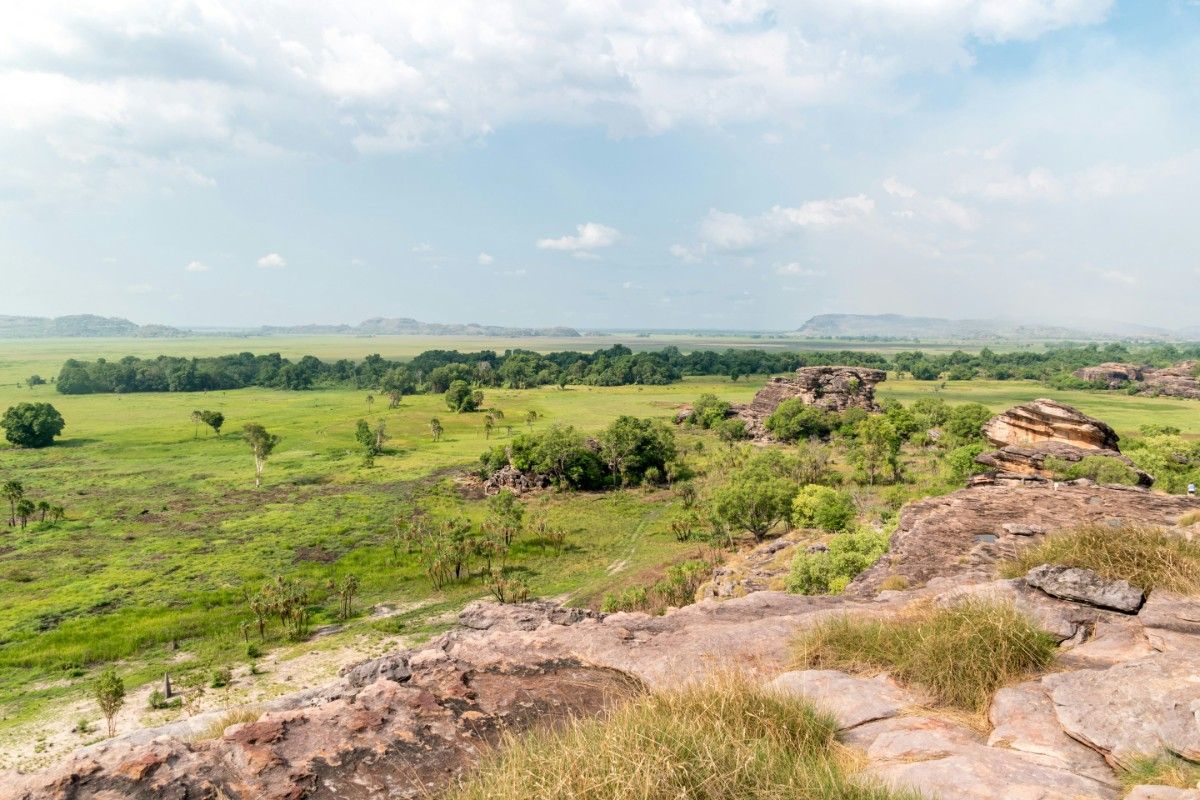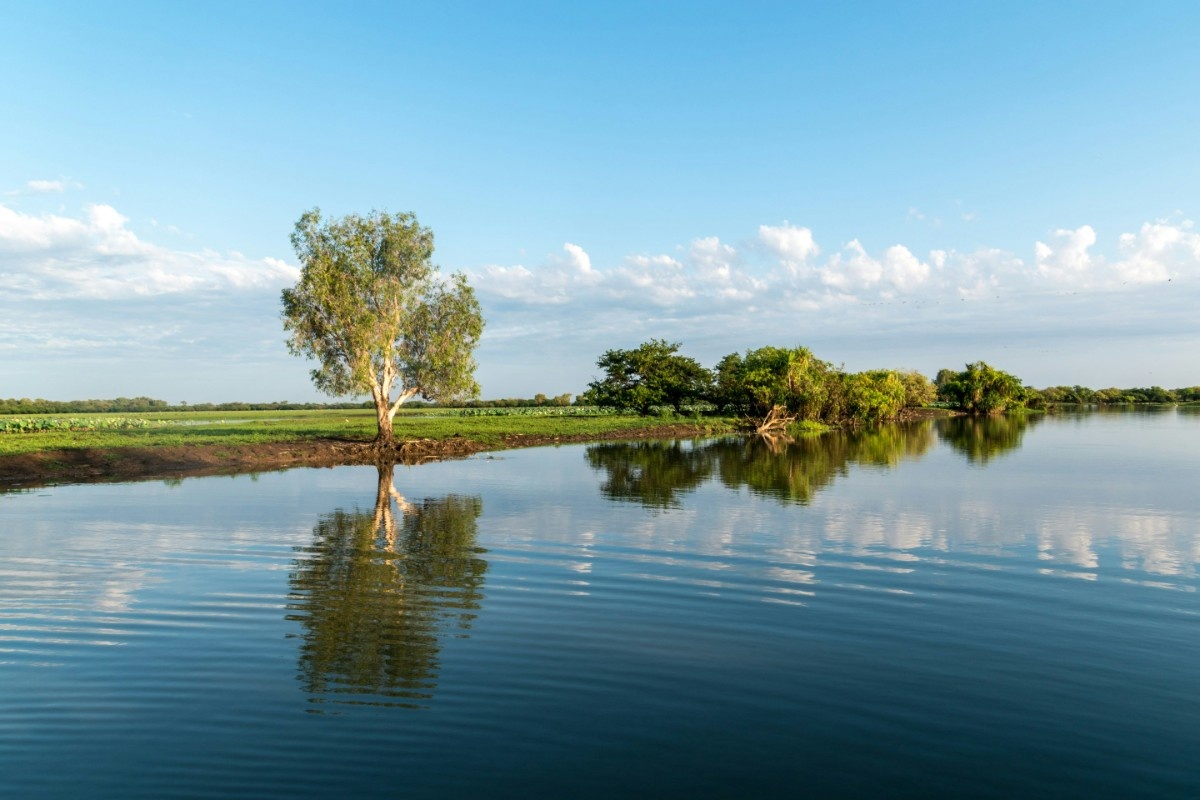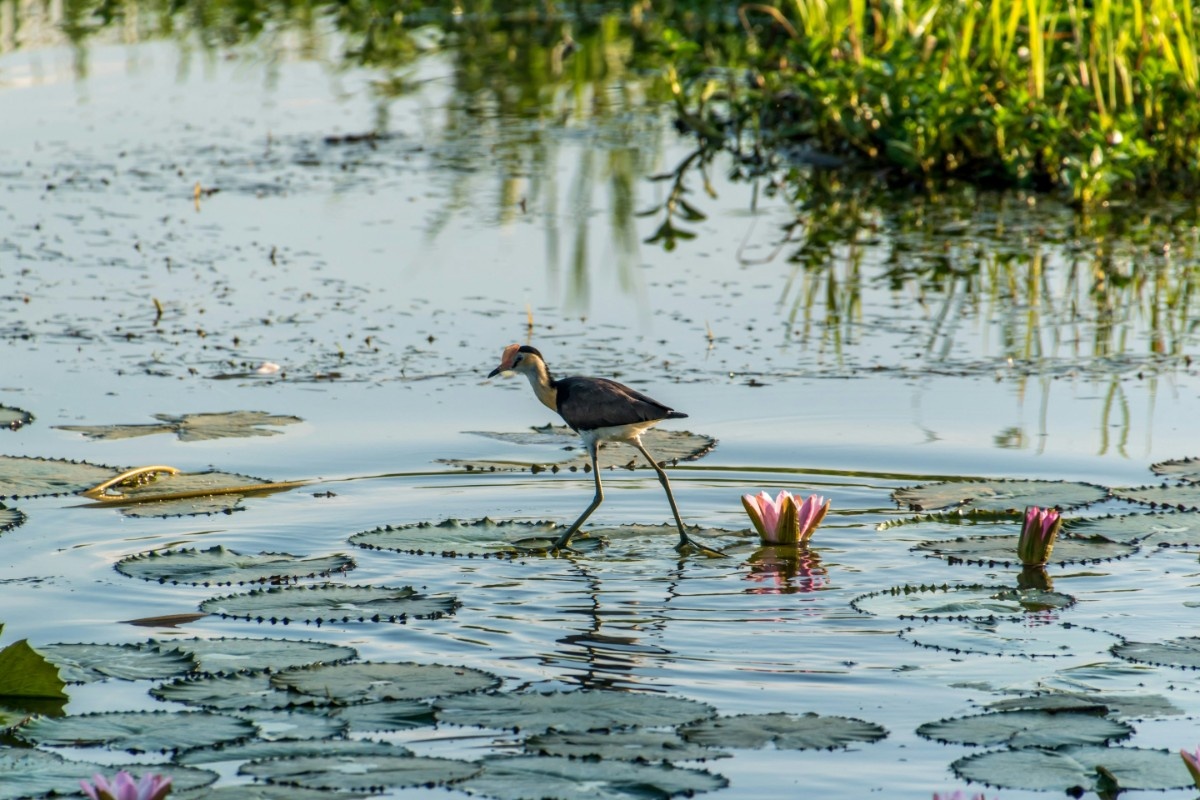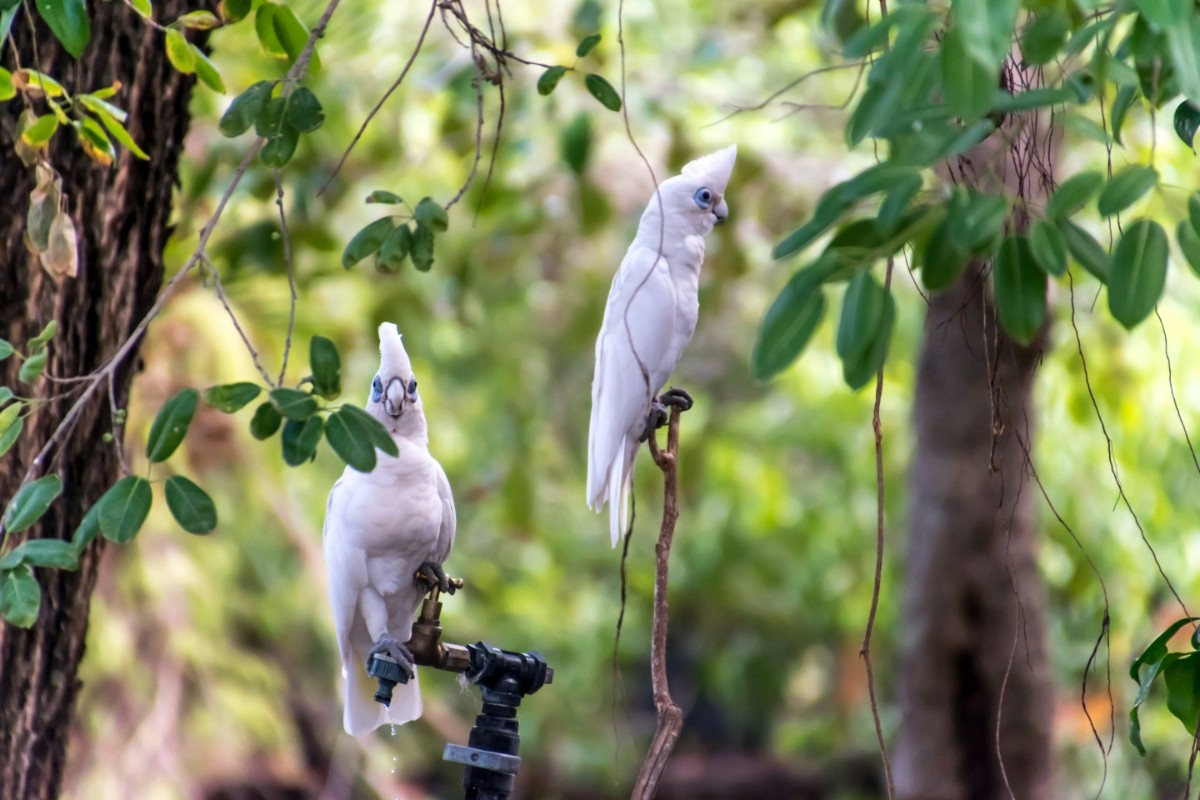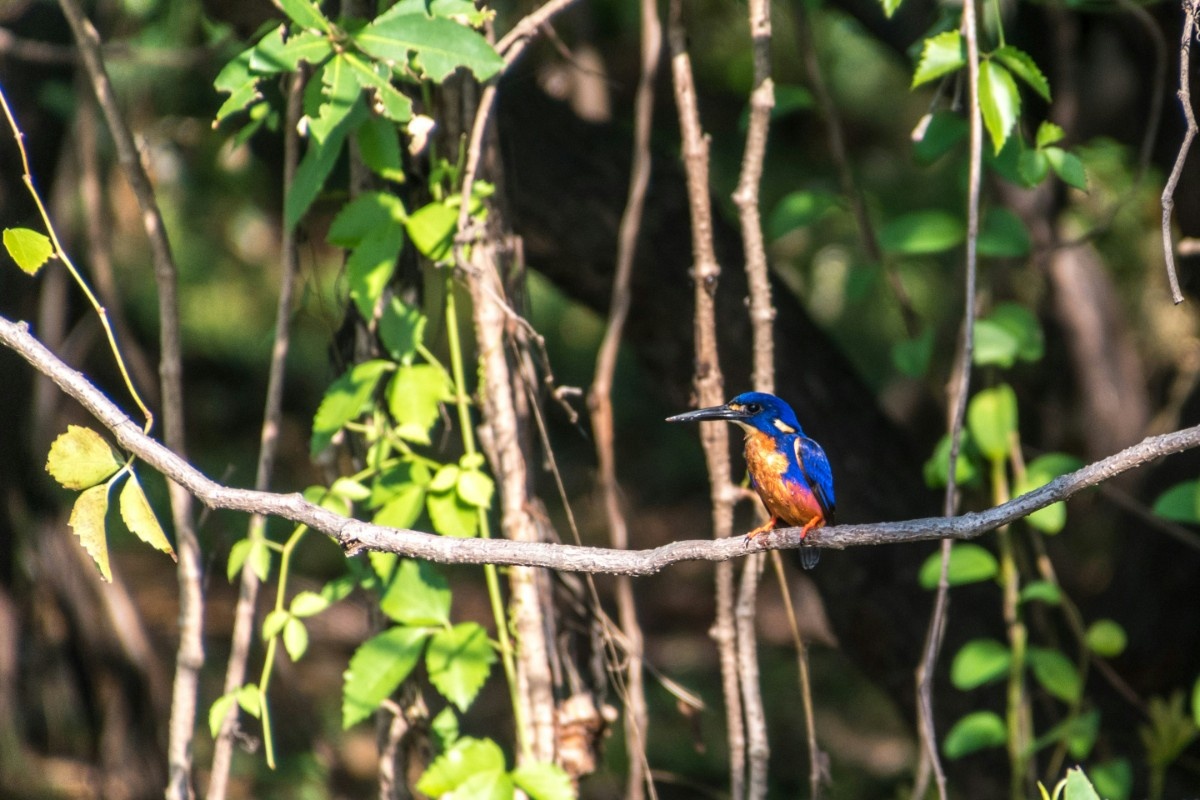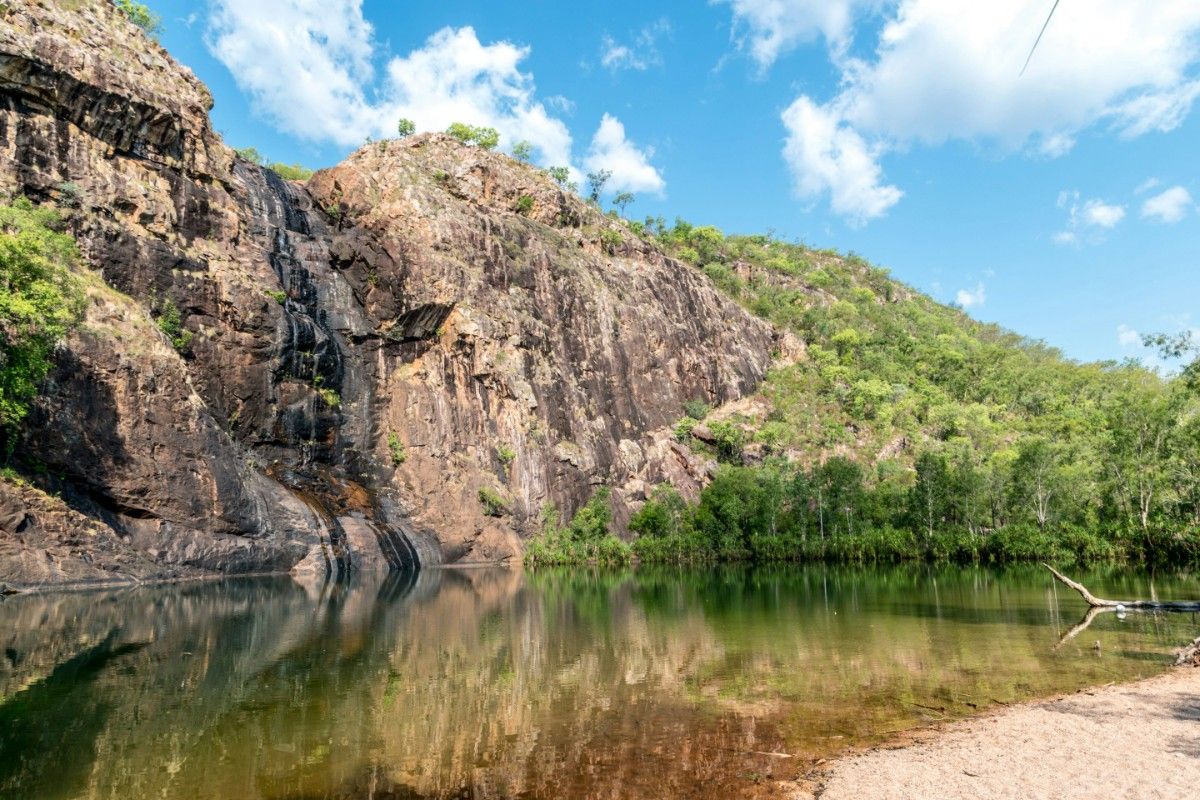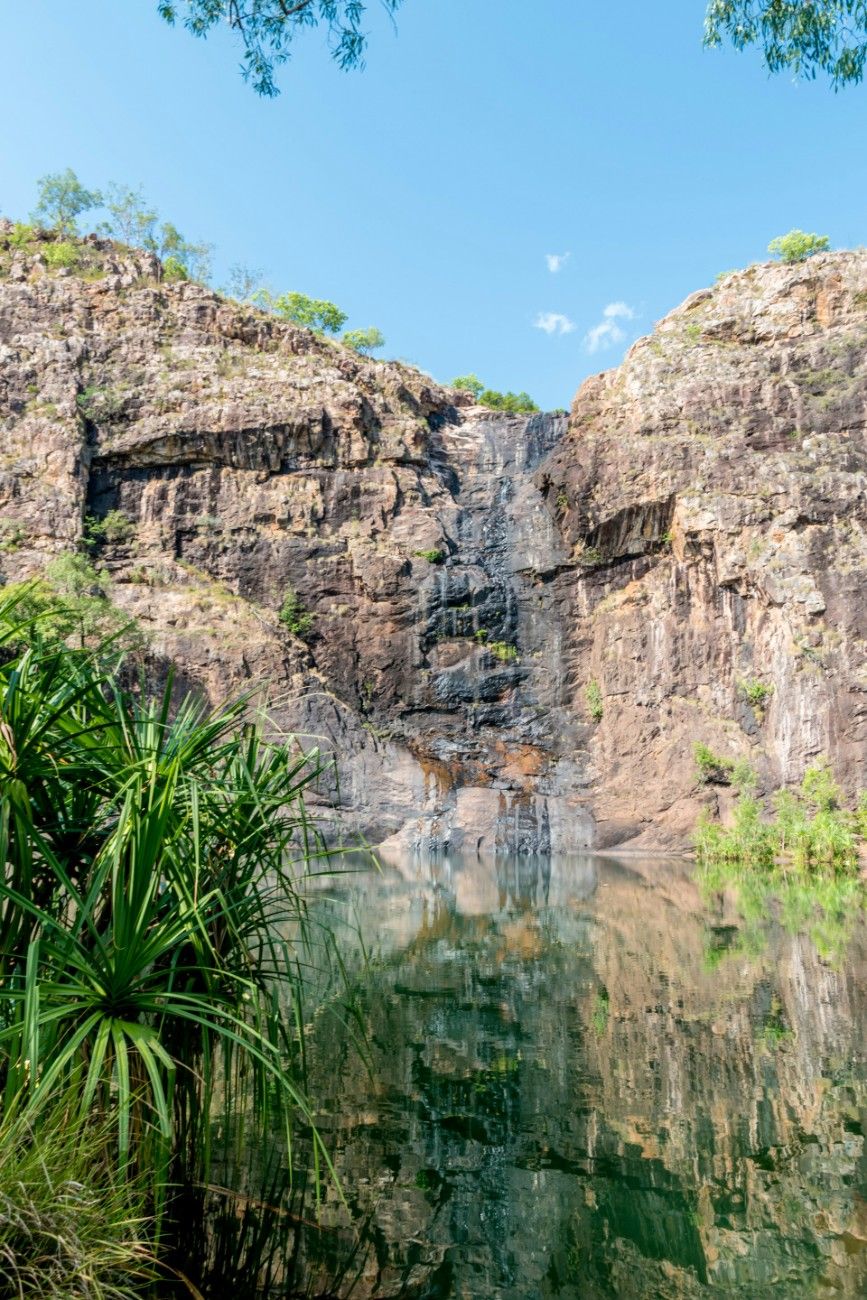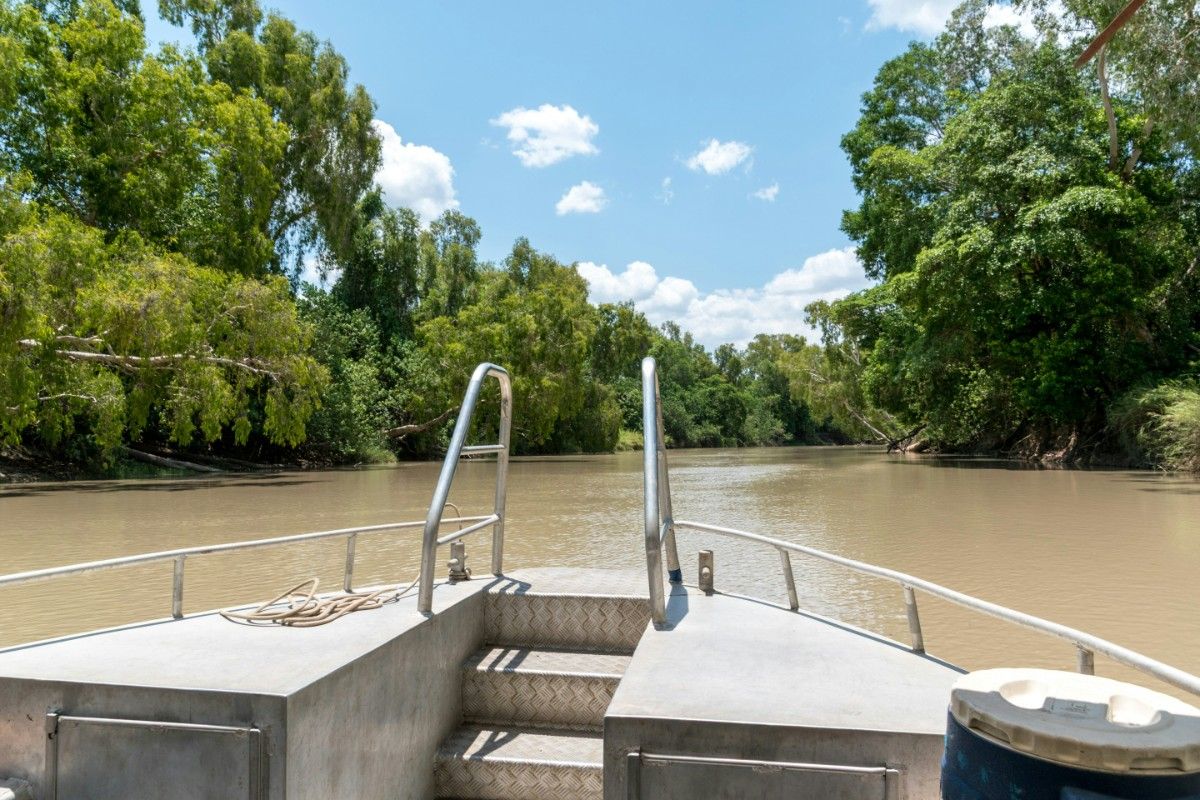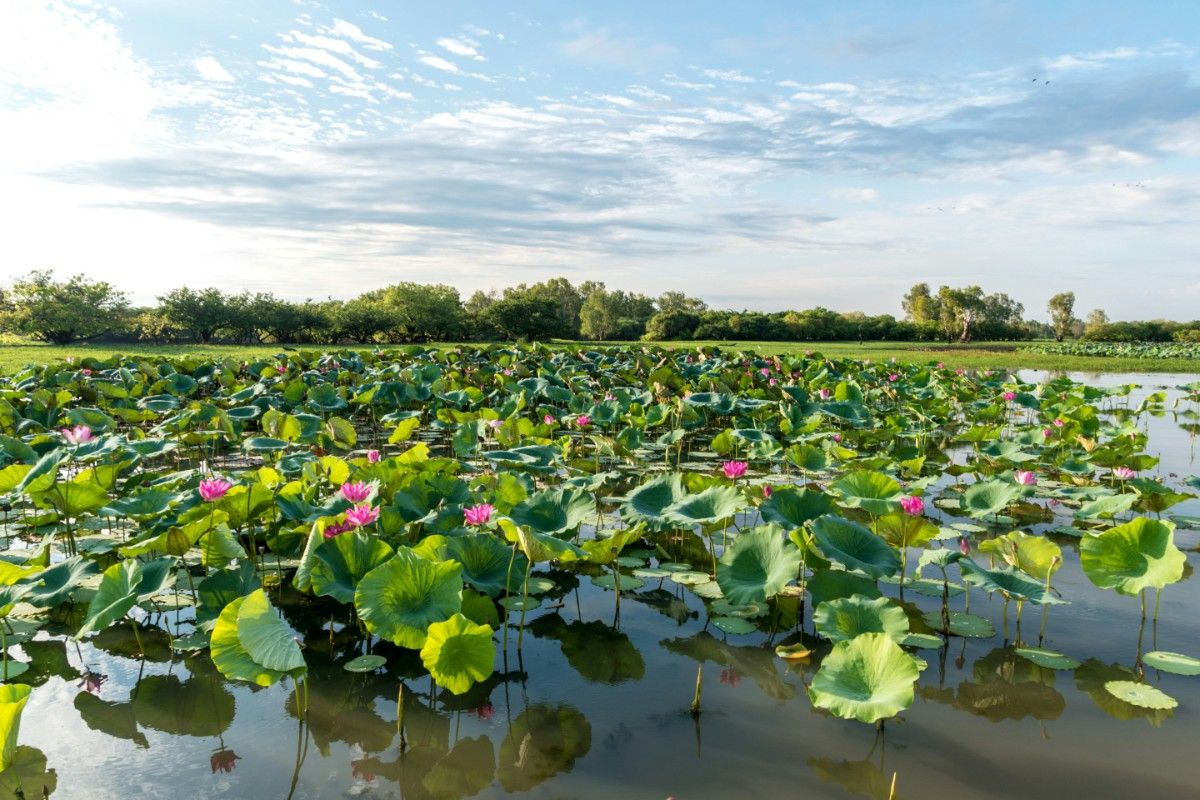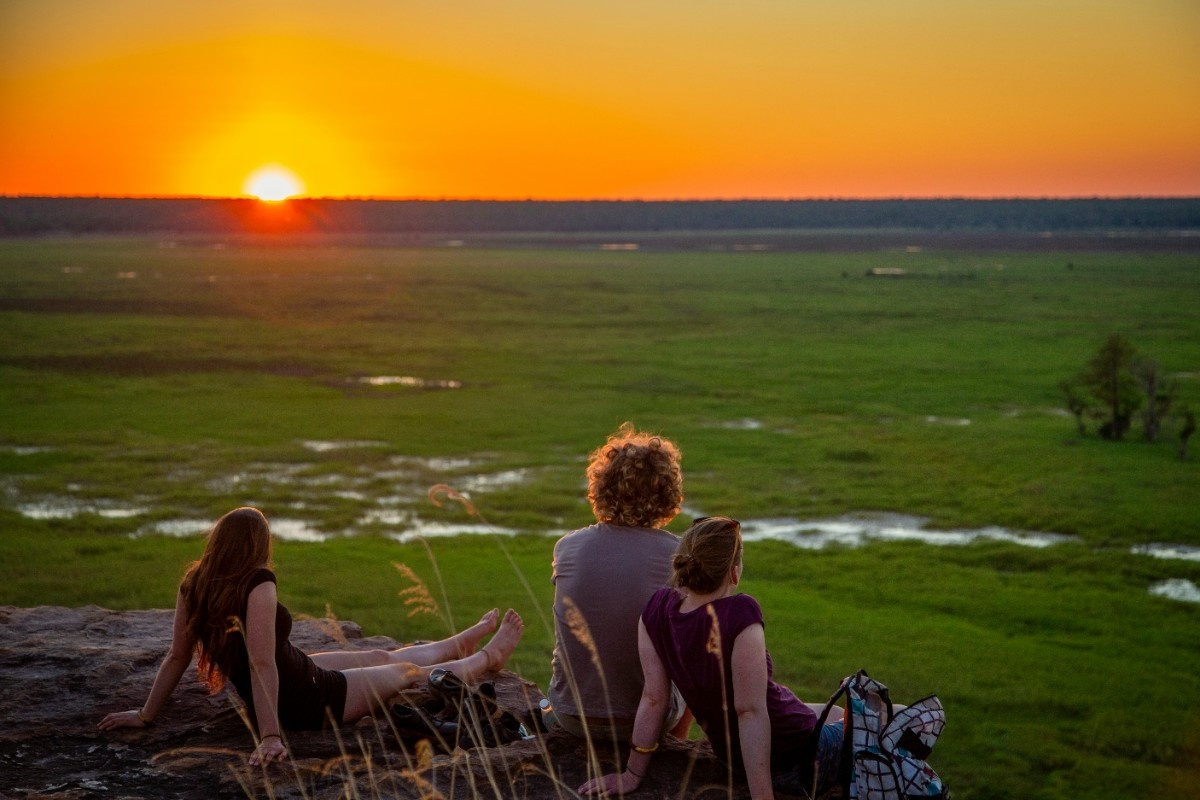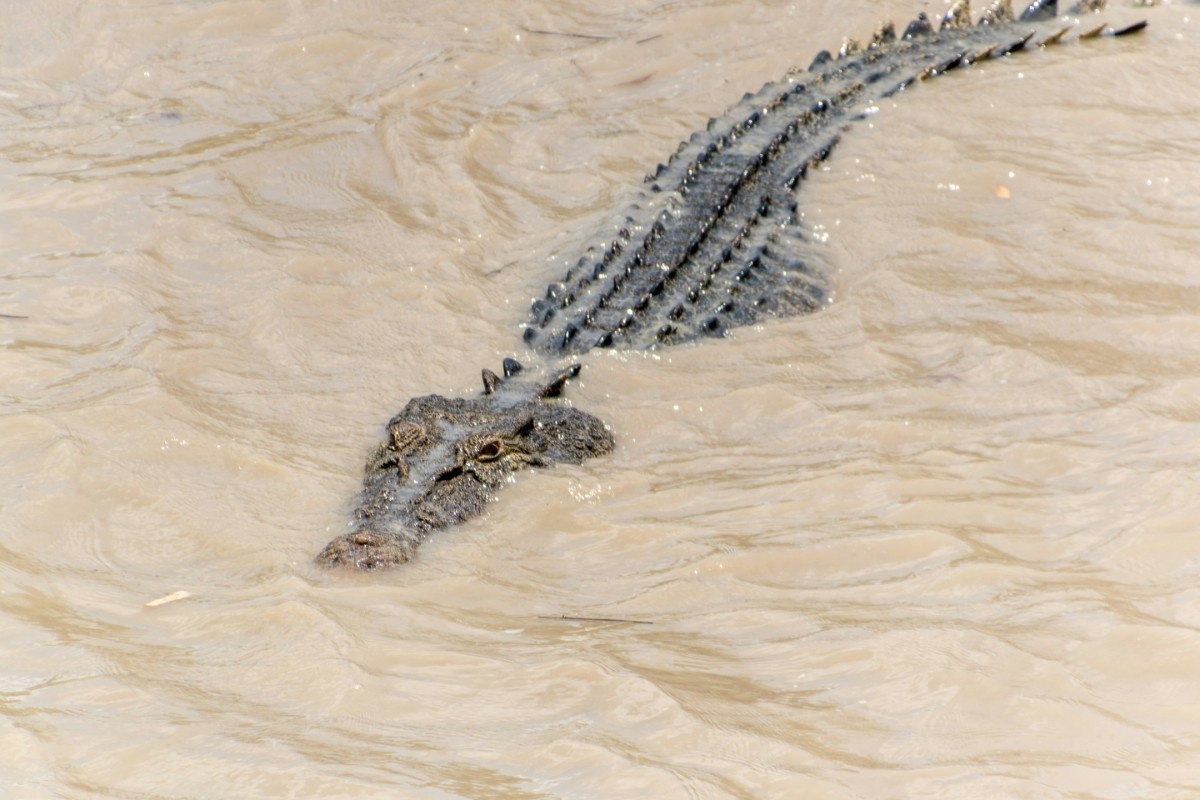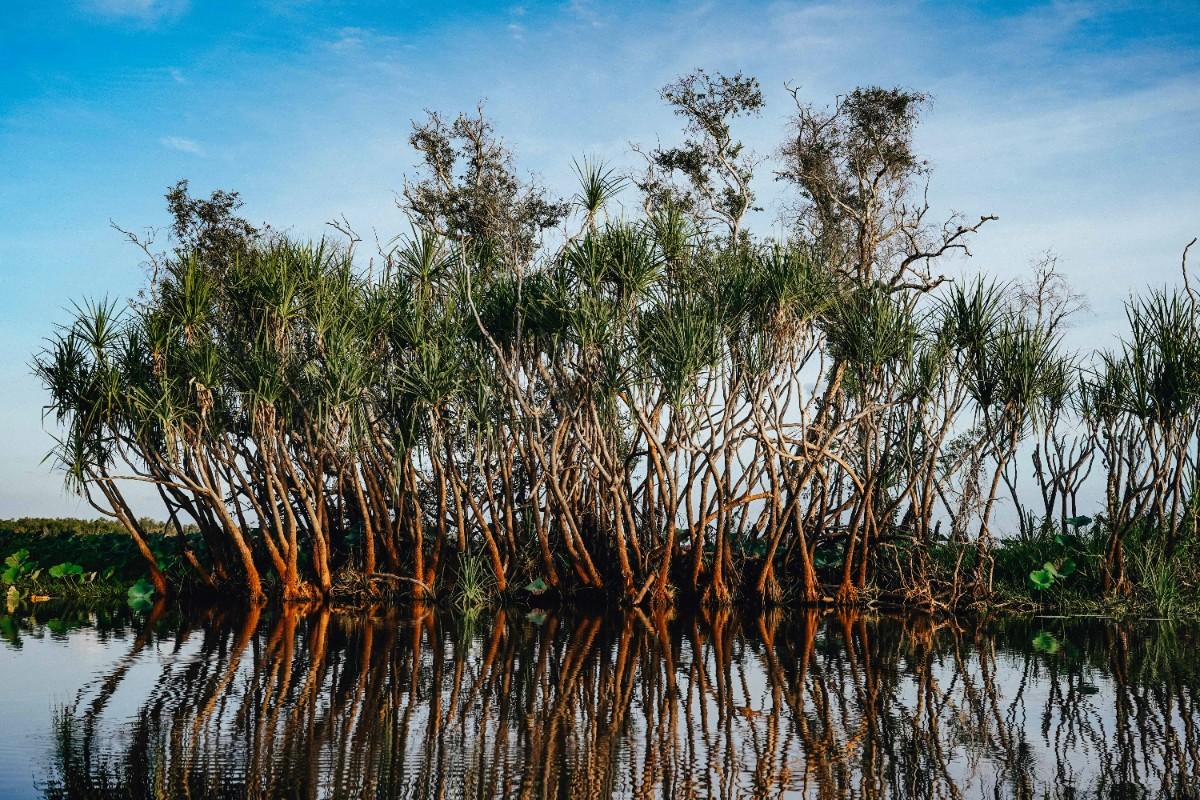Discovering the Wonders of Kakadu National Park
An Introduction to Australia's Largest National Park
Nestled in the heart of Australia's Northern Territory, Kakadu National Park is a natural wonderland that beckons adventurers, nature enthusiasts, and cultural heritage seekers alike. As the largest national park in Australia, spanning nearly 20,000 square kilometres, Kakadu is a UNESCO World Heritage Site that boasts an unparalleled combination of stunning landscapes, diverse wildlife, and ancient Aboriginal heritage. From the moment you set foot in this awe-inspiring wilderness, you'll be captivated by its raw beauty and the countless wonders waiting to be discovered.
Kakadu National Park is located approximately 240 kilometres east of Darwin, the capital city of the Northern Territory. The park's remote location only adds to its allure, promising an escape from the hustle and bustle of modern life and an opportunity to immerse yourself in the untamed splendour of the Australian outback. Whether you choose to explore the park by car, join a guided tour, or embark on a hiking adventure, Kakadu will leave you with memories that will last a lifetime.
Geological Marvels and Ancient Landscapes
One of the most remarkable aspects of Kakadu National Park is its ancient geological history. The park's rugged terrain has been shaped by millions of years of erosion and weathering, resulting in a landscape that is both visually stunning and geologically significant. From the towering sandstone cliffs of the Arnhem Land Escarpment to the vast floodplains that stretch across the park's lowlands, Kakadu's landscapes are a testament to the power and beauty of nature.
As you explore the park, you'll encounter a variety of landforms that showcase the region's complex geological past. The Arnhem Land Escarpment, which runs along the eastern boundary of the park, is a particularly impressive feature, rising up to 300 metres above the surrounding plains. The escarpment is composed of ancient sandstone that has been weathered over time, creating a series of deep gorges, rocky outcrops, and hidden waterfalls that are waiting to be discovered.
A Haven for Wildlife Enthusiasts
In addition to its stunning landscapes, Kakadu National Park is renowned for its incredible biodiversity. The park is home to an astounding array of plant and animal species, many of which are found nowhere else on Earth. From the iconic saltwater crocodile to the elusive Gouldian finch, Kakadu's wildlife is as diverse as it is fascinating.
One of the best ways to experience the park's wildlife is by exploring its extensive network of walking trails and boardwalks. These paths will lead you through a variety of habitats, from lush monsoon forests to expansive wetlands, each supporting its own unique array of flora and fauna. Keep your eyes peeled for agile wallabies bounding through the undergrowth, colourful bird species flitting through the canopy, and perhaps even a glimpse of a majestic eagle soaring overhead.
For those interested in birdwatching, Kakadu National Park is an absolute paradise. The park is home to over one-third of Australia's bird species, with more than 280 species recorded within its boundaries. From the magnificent jabiru stork to the tiny azure kingfisher, Kakadu's birdlife is a sight to behold. The best time to observe the park's avian residents is during the wet season, when thousands of migratory birds flock to the wetlands to feed and breed.
Unveiling the Natural Treasures of Kakadu
The Majesty of Kakadu's Wetlands
One of the most iconic natural features of Kakadu National Park is its extensive network of wetlands. Covering nearly one-third of the park's total area, these wetlands are a vital ecosystem that supports an incredible diversity of plant and animal life. The wetlands are at their most impressive during the wet season, when monsoonal rains cause the rivers and floodplains to swell, transforming the landscape into a lush, watery wonderland.
The Yellow Water Billabong, located near the park's main hub of Cooinda, is one of the best places to experience the beauty and diversity of Kakadu's wetlands. Here, you can join a guided cruise or hire a canoe to explore the tranquil waters and get up close to the wildlife that calls this area home. Keep your camera ready as you glide past majestic saltwater crocodiles basking on the banks, water buffalo grazing in the shallows, and flocks of magpie geese and whistling ducks taking to the skies.
Exploring the Rugged Arnhem Land Escarpment
While the wetlands may be Kakadu's most famous natural treasure, the park's rugged Arnhem Land Escarpment is equally captivating. This ancient sandstone formation stretches for over 500 kilometres along the eastern edge of the park, creating a stunning backdrop of towering cliffs, deep gorges, and hidden waterfalls.
One of the best ways to experience the beauty of the escarpment is by hiking one of the many trails that wind their way through this rugged terrain. The Barrk Sandstone Walk, located near the town of Jabiru, is a challenging but rewarding hike that offers breathtaking views of the surrounding landscape. As you climb the steep slopes of the escarpment, you'll pass through pockets of monsoon forest and emerge onto rocky outcrops that offer panoramic vistas of the wilderness beyond.
For those seeking a more leisurely experience, the Nourlangie Rock Art Site Walk is a must-do. This gentle trail winds its way around the base of Nourlangie Rock, a massive sandstone outcrop that is home to some of the park's most impressive Aboriginal rock art. As you walk, you'll have the opportunity to marvel at the intricate paintings and engravings that adorn the rock face, some of which date back over 20,000 years.
Waterfalls and Swimming Holes: A Refreshing Retreat
After a long day of exploring Kakadu National Park's rugged landscapes, there's nothing quite as refreshing as taking a dip in one of the park's many waterfalls and swimming holes. These natural oases are scattered throughout the park, offering a welcome respite from the heat and a chance to immerse yourself in the beauty of the surrounding wilderness.
One of the most popular swimming spots in Kakadu is Gunlom Falls, located in the southern part of the park. This stunning waterfall cascades over the edge of the Arnhem Land Escarpment, creating a series of crystal-clear pools that are perfect for swimming. The top pool, which can be reached via a steep but well-maintained trail, offers incredible views over the park and is a favourite spot for watching the sunset.
Another must-visit swimming hole is Maguk, also known as Barramundi Gorge. This secluded spot is accessed via a short hike through monsoon forest, which opens up to reveal a deep, clear pool surrounded by towering cliffs. The tranquil waters of Maguk are home to a variety of fish species, including the famous barramundi, making it a popular spot for swimming and snorkelling.
Delving into Kakadu's Ancient Aboriginal Heritage
A Living Cultural Landscape
Kakadu National Park is not just a natural wonderland; it is also a living cultural landscape that has been home to Aboriginal people for over 65,000 years. The park's Traditional Owners, the Bininj/Mungguy people, have a deep spiritual connection to the land and a rich cultural heritage that is interwoven with the natural environment. As you explore Kakadu, you'll have the opportunity to delve into this ancient culture and gain a deeper understanding of the park's human history.
One of the most visible manifestations of Kakadu's Aboriginal heritage is the extensive collection of rock art sites scattered throughout the park. These sites contain some of the oldest and most impressive rock art in the world, with some paintings dating back over 20,000 years. The art depicts a wide range of subjects, from everyday life and hunting scenes to mythical figures and Dreamtime stories, providing a fascinating glimpse into the lives and beliefs of the Bininj/Mungguy people.
Nourlangie Rock: A Gallery of Ancient Art
One of the best places to experience Kakadu's rock art is at Nourlangie Rock, a massive sandstone outcrop located in the heart of the park. The Nourlangie Rock Art Site Walk is a must-do for anyone interested in Aboriginal culture and history. As you walk around the base of the rock, you'll encounter a series of rock shelters and overhangs that have been used as canvases by generations of Bininj/Mungguy artists.
The most famous of these shelters is the Anbangbang Gallery, which contains an impressive array of paintings depicting various aspects of Aboriginal life and culture. One of the most striking images is that of Namarrgon, the Lightning Man, who is said to create the thunderstorms that roll across the Arnhem Land Plateau during the wet season. As you stand before this powerful image, you can almost feel the energy and force of the approaching storm.
Cultural Experiences and Traditional Knowledge
In addition to exploring Kakadu's rock art sites, there are many other ways to engage with the park's Aboriginal heritage. The Warradjan Cultural Centre, located near Cooinda, is a great place to start. This award-winning facility offers a range of interactive exhibits and displays that showcase the culture, history, and contemporary life of the Bininj/Mungguy people. You can also purchase authentic Aboriginal art and craft items here, supporting the local community and taking home a unique memento of your visit.
Another way to delve into Kakadu's Aboriginal heritage is by joining a guided cultural tour led by a Bininj/Mungguy guide. These tours offer a unique opportunity to learn about the park's natural and cultural values through the eyes of its Traditional Owners. You might find yourself gathering bush tucker, learning about traditional hunting and fishing techniques, or discovering the medicinal properties of local plants. These experiences provide a deeper understanding and appreciation of the intimate relationship between the Bininj/Mungguy people and their land.
Chasing Waterfalls and Exploring Gorges in Kakadu
Jim Jim Falls: A Spectacular Cascade
Kakadu National Park is home to some of Australia's most spectacular waterfalls and gorges, each with its own unique character and charm. One of the most iconic of these is Jim Jim Falls, a towering 200-metre cascade that thunders over the edge of the Arnhem Land Escarpment during the wet season. Accessing Jim Jim Falls is an adventure in itself, involving a 4WD trek through rugged terrain and a short hike over boulders and through rainforest. But the effort is well worth it when you finally stand before the falls, feeling the mist on your face and the power of the water reverberating through your body.
During the dry season, when the water flow is reduced to a trickle, you can swim in the crystal-clear plunge pool at the base of the falls and explore the surrounding gorge. The white sand beach and soaring red cliffs create a stunning contrast, making this one of the most photographed spots in the park. Just be sure to heed the safety signs and stay well away from the water's edge during the wet season, when flash flooding can occur without warning.
Twin Falls: A Hidden Gem
Just a short distance from Jim Jim Falls lies another of Kakadu's hidden gems: Twin Falls. As the name suggests, this waterfall is actually two separate cascades that tumble over the escarpment side by side, creating a mesmerising display of water and mist. The falls are at their most impressive during the wet season, but can only be accessed by boat during this time due to the high water levels.
During the dry season, you can hike to the base of the falls and enjoy a refreshing swim in the sparkling plunge pool. The trail to Twin Falls winds through monsoon forest and past ancient rock art sites, offering a glimpse into the area's rich cultural heritage. As you stand beneath the falls, listening to the sound of the water echoing off the rocky walls of the gorge, it's easy to imagine the Bininj/Mungguy people who have been coming to this special place for thousands of years.
Gunlom Falls: A Refreshing Retreat
Another of Kakadu National Park's must-visit waterfalls is Gunlom Falls, located in the southern part of the park. This multi-tiered waterfall is one of the most popular swimming spots in Kakadu, and for good reason. The crystal-clear pools at the base of the falls are perfect for a refreshing dip on a hot day, while the upper pools offer stunning views over the surrounding wilderness.
Getting to the top of Gunlom Falls involves a steep but well-maintained trail that winds its way up the side of the escarpment. The effort is well worth it, however, as you'll be rewarded with a series of natural infinity pools that seem to blend seamlessly with the horizon. This is a popular spot to watch the sunset, as the changing light paints the landscape in a palette of warm oranges and pinks.
Maguk Gorge: A Hidden Oasis
For those willing to venture a little off the beaten path, Maguk Gorge is a hidden oasis that offers a more secluded swimming experience. Also known as Barramundi Gorge, this spot is accessed via a short hike through monsoon forest, which opens up to reveal a deep, clear pool surrounded by towering cliffs. The tranquil waters of Maguk are home to a variety of fish species, including the famous barramundi, making it a popular spot for swimming and snorkelling.
As you float in the cool, clear water, listening to the sound of birdsong echoing off the rocky walls, it's easy to feel a deep sense of connection to the natural world. Maguk Gorge is a reminder of the raw beauty and power of Kakadu National Park, and a testament to the importance of preserving this unique and precious wilderness for generations to come.
Encountering Kakadu's Unique Wildlife and Vegetation
A Biodiversity Hotspot
Kakadu National Park is renowned for its incredible biodiversity, supporting an astonishing array of plant and animal species that have adapted to the park's varied landscapes and harsh seasonal conditions. From the expansive floodplains and billabongs of the lowlands to the rugged sandstone escarpments of the Arnhem Land Plateau, Kakadu is a mosaic of habitats that sustain an abundance of life. In fact, the park is home to over 2,000 plant species, a third of Australia's bird species, and a quarter of its freshwater fish species, making it a true hotspot of biodiversity.
One of the most iconic species found in Kakadu is the saltwater crocodile, the largest living reptile in the world. These powerful predators can grow up to seven metres in length and weigh over 1,000 kilograms, and are found throughout the park's rivers, billabongs, and coastal areas. While saltwater crocodiles are a fearsome sight, they play a vital role in the ecosystem as apex predators, helping to maintain the balance of life in the wetlands. Visitors to Kakadu can safely observe these magnificent creatures from a distance on a river cruise or from designated viewing platforms.
Birdwatching Paradise
For birdwatchers, Kakadu National Park is a veritable paradise, with over 280 species recorded within its borders. The park's wetlands are particularly rich in birdlife, attracting vast flocks of magpie geese, whistling ducks, and other waterbirds during the wet season. One of the most spectacular sights in Kakadu is the arrival of the migrating shorebirds, which travel from as far away as Siberia and Alaska to feed on the abundant food resources of the floodplains.
Other notable bird species found in Kakadu include the majestic white-bellied sea eagle, the colourful rainbow bee-eater, and the elusive red goshawk. The park's savanna woodlands and monsoon forests also support a diverse array of bird life, from the tiny red-backed fairy-wren to the large and raucous sulphur-crested cockatoo. Birdwatchers can explore Kakadu's many habitats on foot, by car, or on a guided tour, armed with binoculars and a field guide to help identify the park's feathered residents.
Flora of the Floodplains and Forests
Kakadu's plant life is equally diverse and fascinating, with each habitat supporting its own unique assemblage of species. The park's extensive floodplains are dominated by grasses and sedges, which provide vital food and shelter for waterbirds and other wildlife. During the dry season, the floodplains dry out and become a sea of golden-brown, punctuated by the skeletal remains of drowned trees.
In contrast, Kakadu's monsoon forests are lush and green year-round, thanks to the high rainfall they receive during the wet season. These pockets of dense vegetation are home to a variety of tree species, including the majestic Allosyncarpia ternata, which is found nowhere else on earth. The monsoon forests also support a diverse array of understory plants, from delicate ferns and orchids to the strange and fascinating pitcher plants, which trap and digest insects to supplement their nutrient intake.
The savanna woodlands that cover much of Kakadu are characterised by tall eucalyptus trees and a grassy understory. These woodlands are home to a variety of iconic Australian animals, such as kangaroos, wallabies, and dingoes, as well as numerous bird and reptile species. During the dry season, the savanna is prone to wildfires, which play an important role in the ecosystem by promoting new growth and maintaining habitat diversity.
Immersing Yourself in Kakadu: Activities and Adventures
Hiking and Bushwalking
One of the best ways to immerse yourself in the natural and cultural wonders of Kakadu National Park is to explore it on foot. The park offers a range of hiking and bushwalking opportunities, from short, easy trails suitable for families to multi-day treks through remote wilderness areas. Many of the park's most famous attractions, such as Jim Jim Falls and Nourlangie Rock, are accessible via well-maintained walking trails that offer stunning views and the chance to see wildlife up close.
For those seeking a more challenging adventure, the Barrk Sandstone Walk is a 12-kilometre loop trail that takes hikers through rugged sandstone country and offers panoramic views of the Arnhem Land Plateau. The Gubara Pools Walk is another popular option, leading through monsoon forest to a series of crystal-clear swimming holes nestled in a secluded gorge. No matter which trail you choose, be sure to carry plenty of water, wear sturdy footwear, and protect yourself from the sun and insects.
Wildlife Watching and Birdwatching
Kakadu National Park's incredible biodiversity makes it a prime destination for wildlife watching and birdwatching. The park's wetlands and floodplains are particularly rich in animal life, and can be explored by boat, vehicle, or on foot. One of the most popular ways to see Kakadu's wildlife is on a Yellow Water Billabong cruise, which offers the chance to see saltwater crocodiles, water buffalo, and a variety of waterbirds up close.
For birdwatchers, Kakadu is a true paradise, with over 280 species recorded within the park's boundaries. The Mamukala Wetlands and the Anbangbang Billabong are two of the best spots for birdwatching, offering the chance to see magpie geese, whistling ducks, and a variety of other waterbirds in large numbers. The park's savanna woodlands and monsoon forests also support a diverse array of bird life, from colourful parrots and finches to majestic birds of prey.
Cultural Tours and Experiences
Kakadu's rich cultural heritage is an integral part of the park's identity, and there are many opportunities for visitors to learn about and engage with the Bininj/Mungguy people's traditional knowledge and way of life. The Warradjan Cultural Centre near Cooinda is a great place to start, offering exhibits and displays that showcase the culture, history, and art of Kakadu's Traditional Owners.
Visitors can also join a guided cultural tour led by an Aboriginal guide, which offers a unique opportunity to learn about the park's natural and cultural values through the eyes of its Traditional Owners. These tours might include activities such as foraging for bush tucker, learning about traditional hunting and fishing techniques, or discovering the medicinal properties of local plants. Other cultural experiences on offer in Kakadu include traditional weaving workshops, didgeridoo demonstrations, and visits to rock art sites with an Aboriginal guide.
Scenic Flights and Helicopter Tours
For a truly unforgettable way to experience the majesty of Kakadu National Park, consider taking a scenic flight or helicopter tour over the park's vast and varied landscapes. These aerial adventures offer a bird's-eye view of Kakadu's winding rivers, expansive floodplains, and rugged sandstone escarpments, as well as the chance to spot wildlife from above.
Many scenic flights depart from the town of Jabiru, located in the heart of the park, and range from short 30-minute jaunts to extended half-day or full-day tours that take in some of Kakadu's most iconic landmarks. Helicopter tours are another option, offering the chance to land in remote locations and explore areas of the park that are otherwise inaccessible. No matter which option you choose, a scenic flight or helicopter tour is sure to be a highlight of your Kakadu National Park adventure.
Kakadu Through the Seasons: A Landscape Transformed
The Wet Season: A Time of Renewal
Kakadu National Park is a landscape in constant flux, shaped by the dramatic seasonal changes that define the Top End of Australia. From November to April, the park is transformed by the arrival of the wet season, which brings monsoonal rains, thunderstorms, and cyclones to the region. During this time, Kakadu's rivers and creeks swell with water, and the floodplains become vast inland seas, attracting millions of migratory birds from across the globe.
For the Bininj/Mungguy people, the wet season is a time of renewal and abundance, when the land comes alive with new growth and the air is filled with the sounds of frogs, insects, and birds. Many of Kakadu's most iconic waterfalls, such as Jim Jim Falls and Twin Falls, are at their most spectacular during the wet season, thundering with the force of the monsoonal rains. While access to some areas of the park may be limited during this time due to flooding, the wet season offers a unique opportunity to witness the raw power and beauty of nature in action.
The Dry Season: A Time of Exploration
As the wet season gives way to the dry season, typically from May to October, Kakadu National Park undergoes another dramatic transformation. The floodwaters recede, leaving behind a landscape of lush green vegetation and teeming with wildlife. For visitors to Kakadu, the dry season is the most popular time to explore the park, with cooler temperatures, clear skies, and easier access to many of the park's top attractions.
During the dry season, Kakadu's hiking trails and scenic drives are at their most accessible, allowing visitors to explore the park's diverse landscapes and cultural sites at their own pace. The park's wetlands and billabongs are still full of water, providing a vital refuge for wildlife and offering some of the best birdwatching opportunities in Australia. As the season progresses, the land begins to dry out, and the park's grassy plains turn a rich golden colour, creating a stunning contrast against the deep blue of the sky.
Seasonal Rhythms and Traditional Knowledge
For the Bininj/Mungguy people, the changing seasons of Kakadu are an integral part of their cultural identity and traditional way of life. Over countless generations, they have developed a deep understanding of the land and its seasonal rhythms, which guides their hunting, gathering, and ceremonial practices. The Bininj/Mungguy calendar recognises six distinct seasons, each with its own unique characteristics and associated cultural activities.
During the wet season, for example, the Bininj/Mungguy people traditionally hunt magpie geese and gather freshwater mussels from the floodplains, while in the dry season, they focus on harvesting yams and other bush foods from the woodlands and savannas. This traditional ecological knowledge is passed down from generation to generation through stories, songs, and ceremonies, ensuring that the Bininj/Mungguy people remain deeply connected to their land and culture.
Preserving Kakadu: Responsible Tourism and Conservation Efforts
Balancing Tourism and Conservation
As one of Australia's most iconic national parks, Kakadu faces the ongoing challenge of balancing tourism and conservation. With over 200,000 visitors each year, tourism plays a vital role in the park's economy and provides important opportunities for visitors to connect with the natural and cultural wonders of the region. However, the impact of tourism on Kakadu's delicate ecosystems and cultural sites must be carefully managed to ensure their long-term sustainability.
The Kakadu National Park management plan, developed in consultation with Traditional Owners and other stakeholders, sets out a range of strategies for managing tourism and protecting the park's natural and cultural values. These include measures such as regulating access to sensitive areas, promoting responsible visitor behaviour, and investing in infrastructure and facilities that minimise environmental impact. By working together, park managers, Traditional Owners, and visitors can help ensure that Kakadu remains a world-class destination for generations to come.
Indigenous Land Management and Cultural Heritage Protection
The Bininj/Mungguy people have been caring for the land and waters of Kakadu for over 65,000 years, and their traditional knowledge and land management practices are vital to the ongoing conservation of the park. Today, Kakadu is jointly managed by the Bininj/Mungguy people and the Australian Government, with a strong emphasis on incorporating traditional knowledge and practices into park management.
One of the key priorities for Kakadu's management is the protection and preservation of the park's rich cultural heritage, including its extensive collection of rock art sites, sacred places, and archaeological remains. This involves a range of measures, such as restricting access to sensitive sites, providing interpretive signage and guided tours, and working with Traditional Owners to ensure that cultural knowledge is passed down to future generations.
Wildlife Conservation and Research
Kakadu National Park is home to an incredible diversity of plant and animal species, many of which are found nowhere else on earth. Protecting this biodiversity is a key priority for park managers, who work closely with researchers and conservation organisations to monitor and manage threatened species and habitats. This includes programs to control invasive species, such as feral pigs and water buffalo, which can cause significant damage to the park's ecosystems.
Research is also an important tool for conservation in Kakadu, with scientists studying everything from the ecology of endangered species to the impacts of climate change on the park's landscapes. By building a deeper understanding of the complex interactions between species and their environments, researchers can help inform management decisions and develop strategies for long-term conservation.
Fire Management and Landscape Health
Fire is a natural and important part of Kakadu's ecosystems, and has been used by the Bininj/Mungguy people for thousands of years to manage the land and promote biodiversity. Today, fire management is a key priority for park managers, who work closely with Traditional Owners to implement strategic burning programs that reduce the risk of large-scale wildfires and maintain the health of the park's landscapes.
By burning small patches of land early in the dry season, when the vegetation is still relatively moist, park managers can create a mosaic of different habitat types and reduce the fuel load that can contribute to more intense and destructive fires later in the year. This not only helps protect the park's biodiversity, but also reduces the risk to human life and property from wildfires.
Related Articles

Let us know you agree to cookies
We use marketing, analytical and functional cookies as well as similar technologies to give you the best experience. Third parties, including social media platforms, often place tracking cookies on our site to show you personalised adverts outside of our website.
We store your cookie preferences for two years and you can edit your preferences via ‘manage cookies’ or through the cookie policy at the bottom of every page. For more information, please see our cookie policy.
